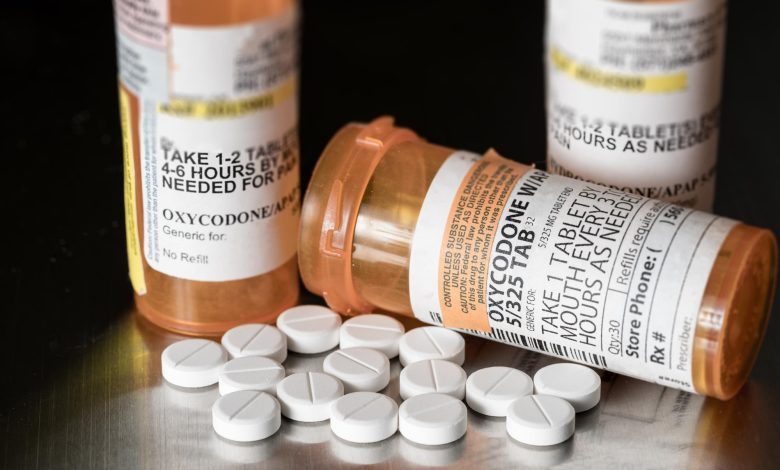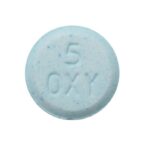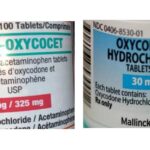How Long Does Oxycodone Stay In Your System?

Oxycodone is a powerful opioid medication that is commonly used to treat moderate to severe pain. It works by binding to specific receptors in the brain and spinal cord known as opioid receptors, which reduces the sensation of pain.
The human body produces its own natural opioids called endorphins, which are released in response to pain or stress. These endorphins bind to opioid receptors in the brain and spinal cord, reducing pain and producing feelings of pleasure and relaxation.
Oxycodone is a synthetic opioid that mimics the effects of endorphins by binding to opioid receptors in the brain and spinal cord. When oxycodone binds to these receptors, it blocks the transmission of pain signals and produces feelings of euphoria, relaxation, and well-being.
When oxycodone is taken orally, it is rapidly absorbed into the bloodstream through the gastrointestinal tract and distributed throughout the body. The drug is metabolized primarily in the liver and eliminated from the body through urine and feces.
Oxycodone is classified as a controlled substance in the United States by the Drug Enforcement Administration (DEA). It is listed as a Schedule II drug, which means it has a high potential for abuse and dependence but is still considered to have some medical use. This classification also means that there are strict regulations on the manufacturing, distribution, and prescription of oxycodone to minimize the potential for abuse and addiction. It is important to only use oxycodone under the guidance and supervision of a licensed healthcare provider.
How Long Does Oxycodone Stay In Your System?
When oxycodone is taken orally, it is rapidly absorbed into the bloodstream through the gastrointestinal tract and distributed throughout the body. The drug is metabolized primarily in the liver and eliminated from the body through urine and feces.
The amount of time that oxycodone stays in your system depends on a variety of factors, including your age, weight, metabolism, and overall health. In general, oxycodone can be detected in urine, blood, saliva, and hair for different lengths of time.
Urine Test: A urine test is the most common method used to detect the presence of oxycodone in the body. The drug can be detected in urine for up to 3-4 days after the last dose. However, in some cases, oxycodone can be detected in urine for up to a week or more in chronic users.
Blood Test: Oxycodone can also be detected in blood tests, which are often used in medical settings to monitor drug levels in patients. The drug can be detected in blood for up to 24 hours after the last dose.
Saliva Test: Saliva tests are another way to detect the presence of oxycodone in the body. The drug can be detected in saliva for up to 1-4 days after the last dose.
Hair Test: Hair tests can also be used to detect the presence of oxycodone in the body. Hair tests can detect drug use for up to 90 days or more after the last dose, depending on the length of the hair sample collected.
It is important to note that the detection times listed above are general guidelines and can vary based on individual factors. For example, chronic users of oxycodone may have a longer detection time than occasional users. Additionally, factors such as hydration, liver and kidney function, and overall health can also impact how long oxycodone stays in the body.
How To Get Oxycodone Out Of Your System Faster
The safest and most effective way to detox from oxycodone is under the guidance of a healthcare professional, such as a doctor or addiction specialist. They can help you develop a personalized treatment plan that addresses your unique needs and provides the support you need to manage withdrawal symptoms.
Withdrawal symptoms from oxycodone can include nausea, vomiting, diarrhea, sweating, chills, muscle aches, anxiety, and insomnia. Depending on the severity of your addiction and withdrawal symptoms, here are some steps and strategies that healthcare professionals may use to help you detox from oxycodone:
- Medical assessment: Before beginning the detox process, your healthcare provider will evaluate your medical history, current health status, and any other factors that may impact your treatment plan. This includes a physical examination, blood tests, and possibly imaging studies.
- Tapering off the drug: The safest and most effective way to detox from oxycodone is to gradually reduce your dosage over time. This approach helps manage withdrawal symptoms and reduces the risk of severe complications. Your healthcare provider will create a tapering schedule tailored to your individual needs, taking into account factors such as the severity of your addiction and the length of time you have been using oxycodone.
- Medications: Your healthcare provider may prescribe medications to manage withdrawal symptoms, such as anti-nausea drugs, anti-diarrhea drugs, or benzodiazepines to manage anxiety. These medications should only be used under close medical supervision, as they can be addictive in their own right.
- Supportive care: Detoxing from oxycodone can be physically and emotionally challenging, and supportive care can help you manage the process. This may include therapy, support groups, or other types of counseling to help you cope with withdrawal symptoms and stay motivated throughout the detox process.
- Inpatient or outpatient treatment: Depending on the severity of your addiction and withdrawal symptoms, you may need to receive treatment in a hospital or detox center. Inpatient treatment involves staying at a medical facility for a period of time to receive round-the-clock care and support. Outpatient treatment allows you to receive treatment while continuing to live at home, but requires frequent visits to a healthcare provider or addiction specialist.
- Aftercare: Once you have completed detox, it is important to continue with aftercare to help prevent relapse and manage cravings. This may include ongoing therapy or support group participation, as well as ongoing medical care to manage any underlying health conditions.
It is important to remember that detox is just the first step in the recovery process. To achieve lasting recovery from oxycodone addiction, it is important to commit to a comprehensive treatment plan that addresses the physical, emotional, and psychological aspects of addiction.





